Jesse Lingard, for the first time in his career, will be looking to gain regular game time and become the star player for his side. At the age of 29, Lingard has only once played more than the 50% of minutes available in a league campaign, playing 53% of minutes during the 2017/18 season with Manchester United.
In 2021, Lingard went on a loan move to West Ham, where he managed to get 14 goal contributions in 16 appearances, helping guide the Hammers to Europa League football, and only two points off a Champions League spot. That half-season run-out proved his ability to be a difference maker at the top end of the Premier League, and whilst he wasn’t trusted when he returned to Old Trafford, it is clear that there is a top player in Jesse Lingard.
Furthermore, there is a World Cup coming up that Lingard will be hoping to be a part of. Having the experience of playing at the previous World Cup, Lingard had the backing from Gareth Southgate who started him in every knockout game, but due to the lack of minutes, Lingard has rarely ever been picked to represent England since. Jesse Lingard will have the next two to three months to remind everyone of his talents, although it is unlikely that it will be enough to secure a place in the World Cup.
Nevertheless, Lingard’s priority will be to help Nottingham Forest avoid relegation in the upcoming Premier League season. Forest will be in the Premier League for the first time in 23 years, after beating Huddersfield Town in the play-off final. The squad has received major backing, and the owners will be hoping to maintain their status in the Premier League although the task will be extremely difficult.
This scout report will contain an analysis of Lingard’s spell at West Ham, showing what he is capable of when getting a run of games under his belt. It will also be a tactical analysis of the different ways Lingard will help Forest win games and a look into how Lingard will fit into the tactics used by Steve Cooper.
The Fit at Forest
Last season, Cooper lined Forest up in a 3-5-2 formation, with one attacking midfielder roaming behind two strikers. It is very likely that in the Premier League, Nottingham Forest will be happy to give the opposition time on the ball while setting up in a compact mid-block and trying to counterattack teams with speed and direct attacks in the space left by defenders joining the attack. This could look to be very similar to the style of play David Moyes utilises at West Ham, the system which made the best out of Jesse Lingard’s best qualities.
Player Profile
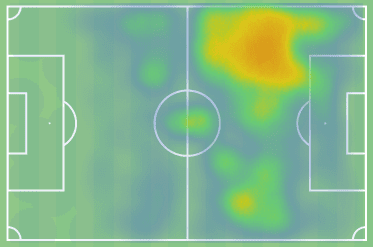
The above shows a heat map of Jesse Lingard at West Ham in 2021. He was usually deployed as a left winger in West Ham’s 3-4-3 and was also comfortable playing on the right wing. As a ’10’, Lingard will have to be able to operate in central areas, whilst also being comfortable roaming the wide areas to attack any space in behind. Like at West Ham, Forest will usually create chances through direct counterattacks, which will help make the most out of Lingard’s qualities. Jesse Lingard is intelligent in the movement he has, and is very good at attacking space in behind.
The weaker part of his game is when he faces deep blocks, but that is something that he shouldn’t come up against too often.
Direct Dribbling
Jesse Lingard is a very strong carrier of the ball. He is quick and has the ability to hold off challenges from more physical defenders, which will be essential to Nottingham Forest. Lingard will be able to drive the entire team up the pitch with his speed and dribbling, helping them to escape pressure and begin attacks from out of nowhere.
The image below shows Lingard receiving the ball with his back to goal and under pressure from Granit Xhaka. Lingard uses his small and agile frame by dropping his shoulder to make Xhaka commit one way before turning the other way and out of pressure. Lingard’s press evasiveness is impressive and is a skill which will help him regularly start counterattacks for Forest, a move that will frequently see Forest score goals.

Lingard is also strong at beating his man 1v1 when there is space to knock the ball past them. As seen in the image below, Lingard can efficiently dribble past defenders through his ability to slow down play, before bursting past them due to his quick acceleration. Jesse Lingard can consistently lure defenders in before knocking it into the space behind them, and this is something which he can do with either foot on either side.
Another strength Lingard possesses is his quick turns on the ball when driving with the ball at speed. Lingard can effortlessly move the ball from side to side, leaving his opponents guessing and unable to commit to a tackle.
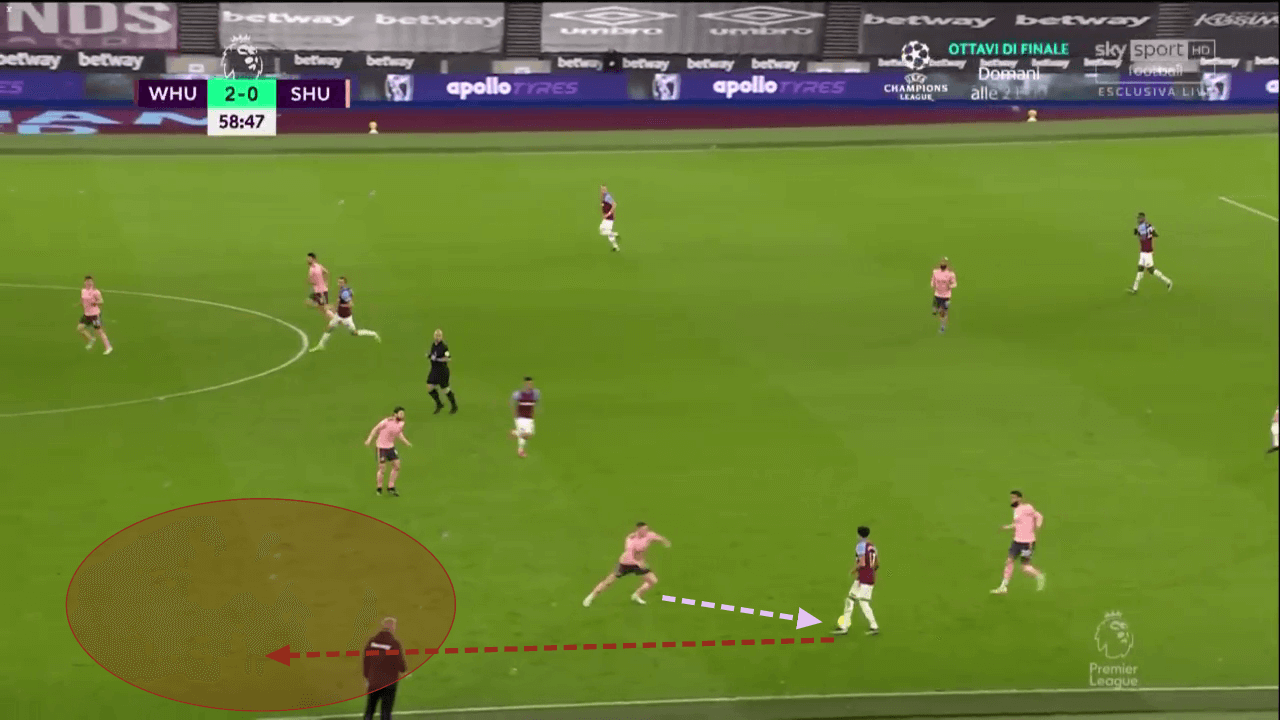
Whilst Lingard is good at dribbling into space from deeper areas, he does struggle with dribbling in the final third. He struggles to manipulate the ball, meaning defenders in deeper areas don’t have to commit to a tackle. They allow Lingard to try and beat them, and it can be simple to track the ball and put a foot in. In those deep areas, Lingard can’t knock the ball past the defenders into space, as there is simply not enough space for the ball to roll into.
Jesse Lingard has shown good qualities in terms of ball control and receiving the ball between the lines. He is comfortable in receiving it in those tight spaces due to his good ball control and ability to control it on the half turn. He can effectively turn on the ball, and be in a prime position to run at the back line.
One other area where Lingard will struggle is his tendency to hold onto the ball for too long. Lingard often beats a defender, and rather than releasing the ball, he will continue to carry it deeper into the half, where he often finds himself in dead ends, left with no passing options when he eventually looks up.
Clinical in front of goal
Jesse Lingard scored 9 goals in 16 appearances for West Ham. A regular run of games allowed him to build momentum and some of the goals Lingard scored during that period, and during his time at Manchester United were simply sublime. Lingard has shown his ability to score incredible goals both on the floor and from volleys. Lingard doesn’t always strike through the ball with incredible power, but he has the ability to place the ball in the corner and does well to ensure the ball doesn’t rise over the bar.
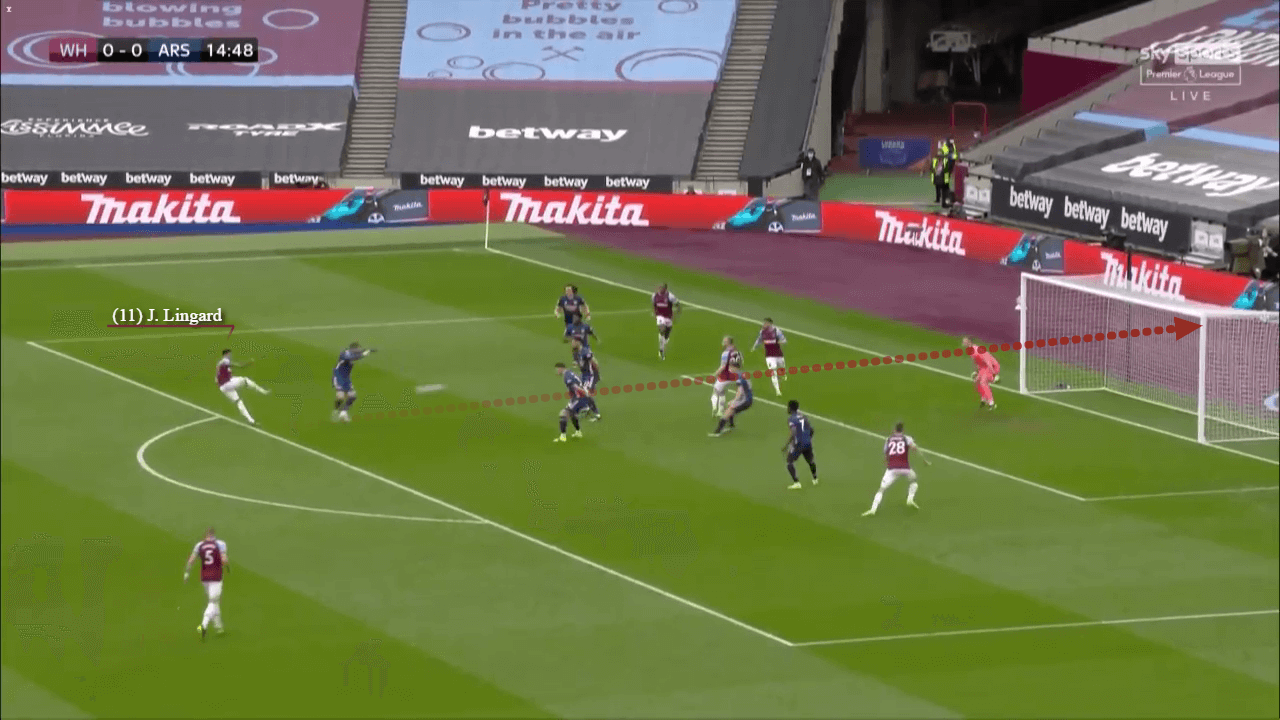
This efficient finishing ability is consistent with either foot. Lingard can place the ball into the correct position equally effectively with both his left and right foot. The image below shows him running onto a loose ball and placing the ball into the side netting with his left foot. This image also displays his composure to slow down before taking the shot to allow himself to prepare to strike through the ball as best as he can.
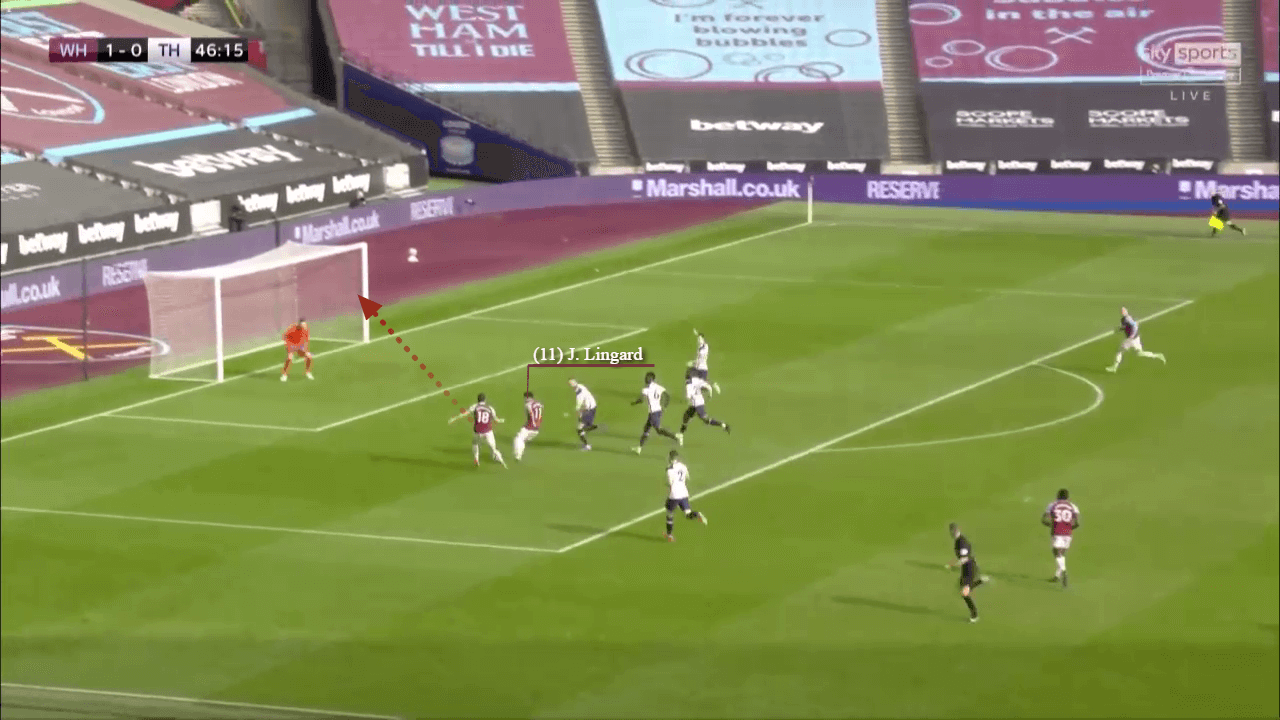
Passing Problems
Jesse Lingard has shown during his entire Premier League career, that he thrives in space but his quality in terms of both dribbling and passing does lower when he is up against deep blocks. However, in counterattacking situations, Lingard can play the correct pass with the right amount of weight to allow the striker to be in an optimal position to score a goal. The clip below displays his intelligence in holding on to the ball until Michail Antonio makes the run into space, before playing the pass and Antonio slots it past the keeper.
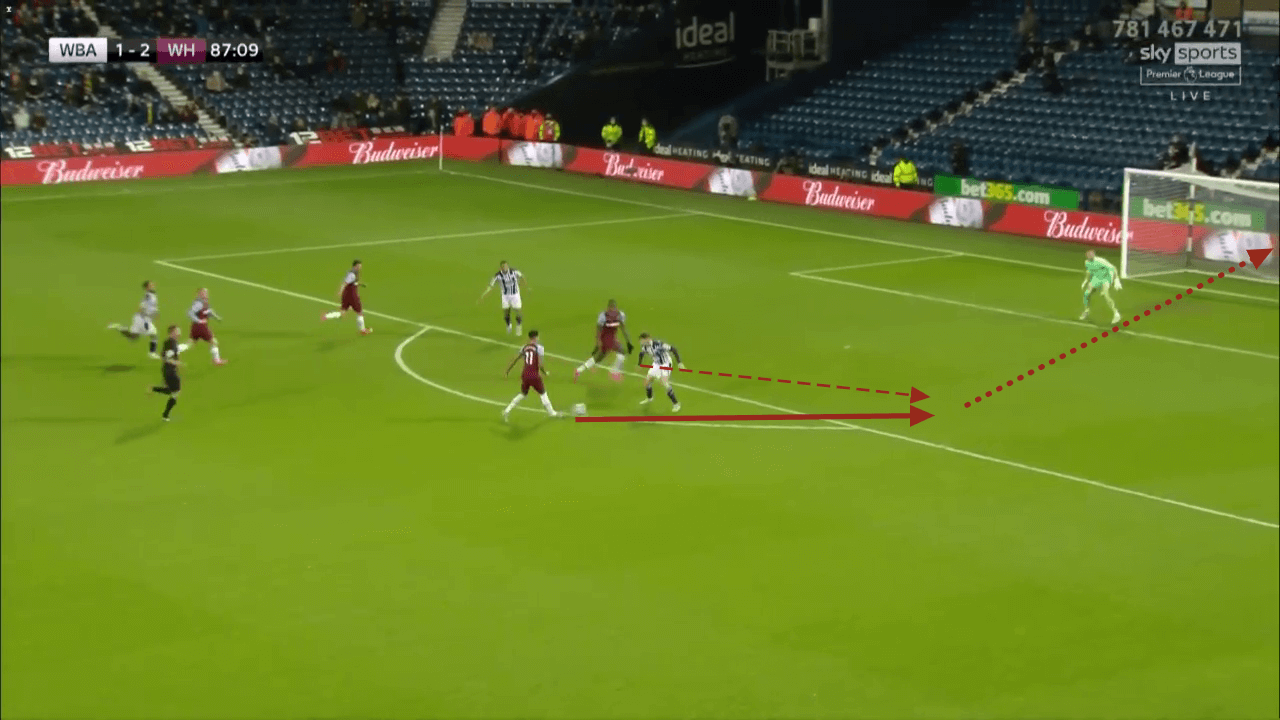
The ability to play the pass at the right time, just before the attacker will be in an offside position, is yet another key skill that allows Lingard to be so effective in counterattacking situations. Lingard has the awareness to utilise this skill combined with his range of passing to do this in both short passes, and longer-ranged passes into space. The image below shows his technique to play the pass into space with the outside of his boot.
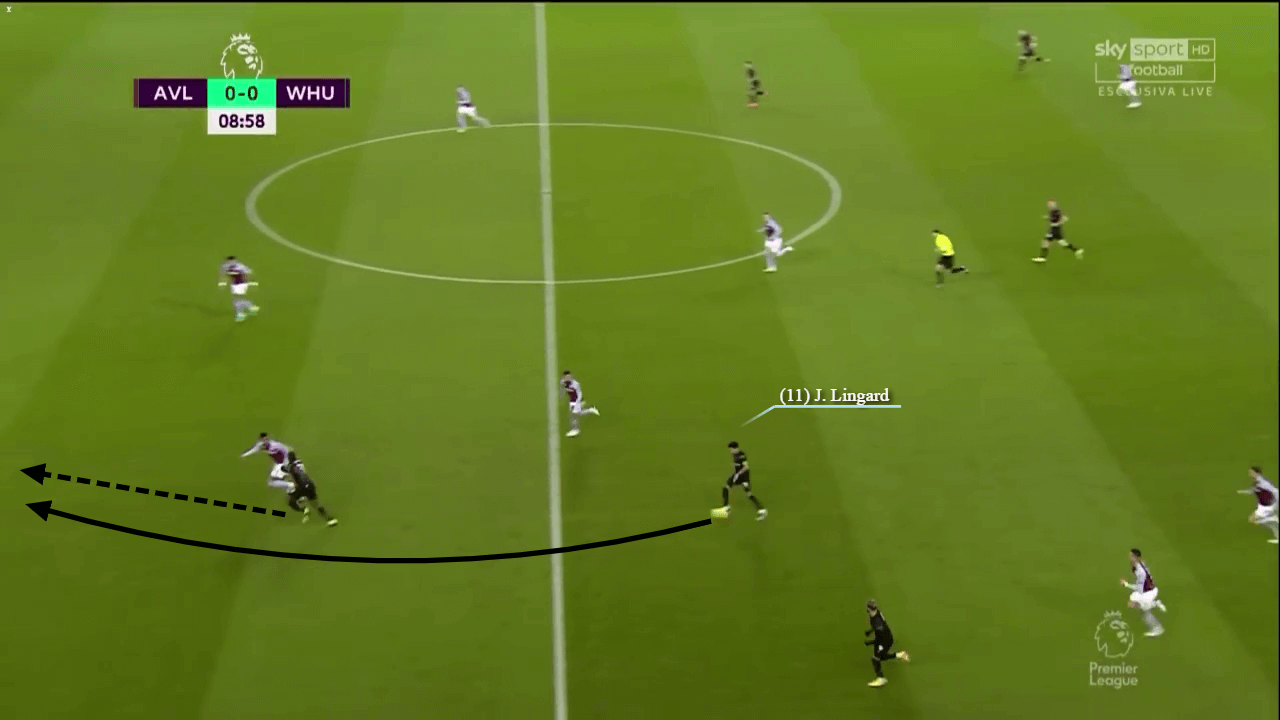
Lingard can also combine when playing between the lines, although this is something that isn’t as consistent in his skill set, and also something he doesn’t do too regularly due to the fact he plays in counterattacking sides. Jesse has also struggled in playing a killer pass against a low block, something that didn’t happen during his time at West Ham as most attempts were misplaced or overhit.
In wide areas, Jesse Lingard has had inconsistent crossing displays. Lingard can’t whip a cross with power, he has frequently attempted floated crosses, although they find the keepers’ hands too often for him to be considered a good creative player.
Intelligent Movement
One of Jesse Lingard’s biggest strengths is his ability to attack the box with late runs, and the ability to find himself in open spaces from high probability scoring situations. Lingard can consistently find space in the box, or on the edge, from where he can shoot first-time at a goal where the goalkeeper is shuffling across from the near post. This image below shows how he curves his run, to stay in the blind side of Ruben Dias so he can arrive at the six-yard box unmarked. His shot wasn’t accurate but it was finished off by Antonio.
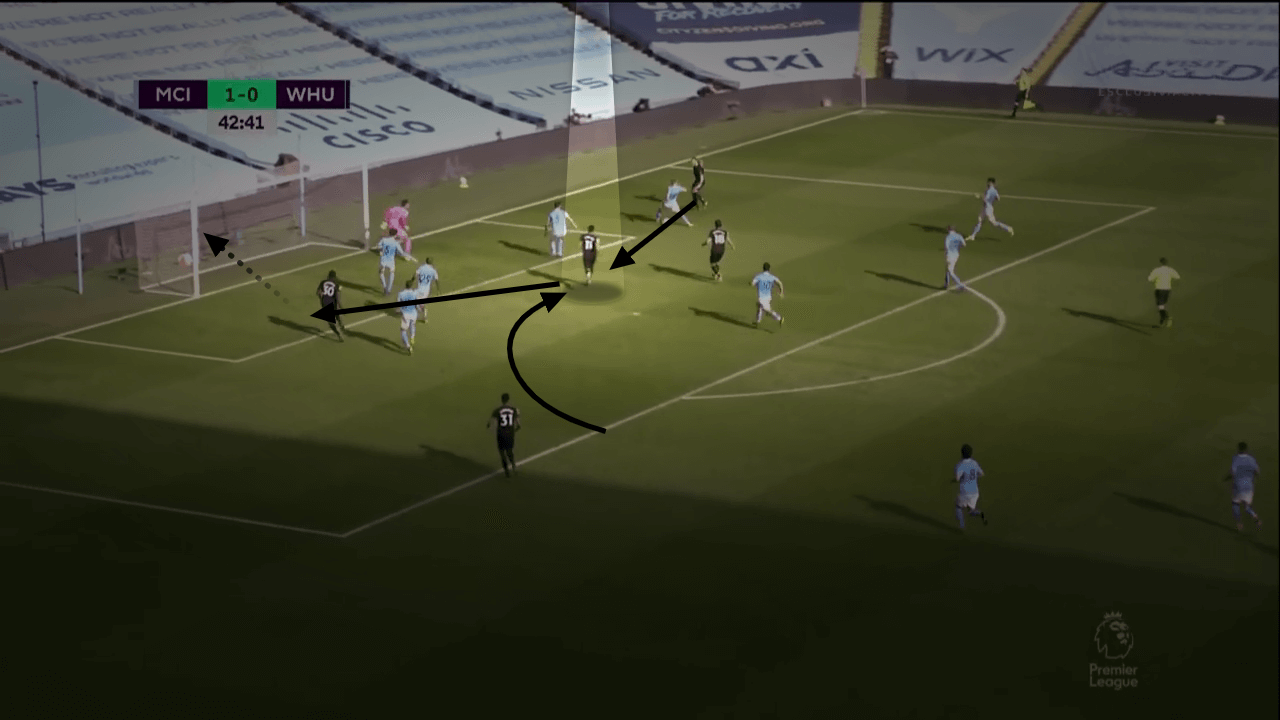
Another strength of Lingard, and one which will be often utilised by Forest, is his ability to drag defenders out of position with his smart and staggered runs. The image below shows how he intelligently moves towards the ball, which makes the defender think Lingard wants the ball at his feet. This baits the defender to step up before Lingard attacks the space the full-back leaves open. This situation allowed him to have lots of space in the box, from which he picks out a dangerous ball across the face of the goal for Dominic Calvert-Lewin to finish off.
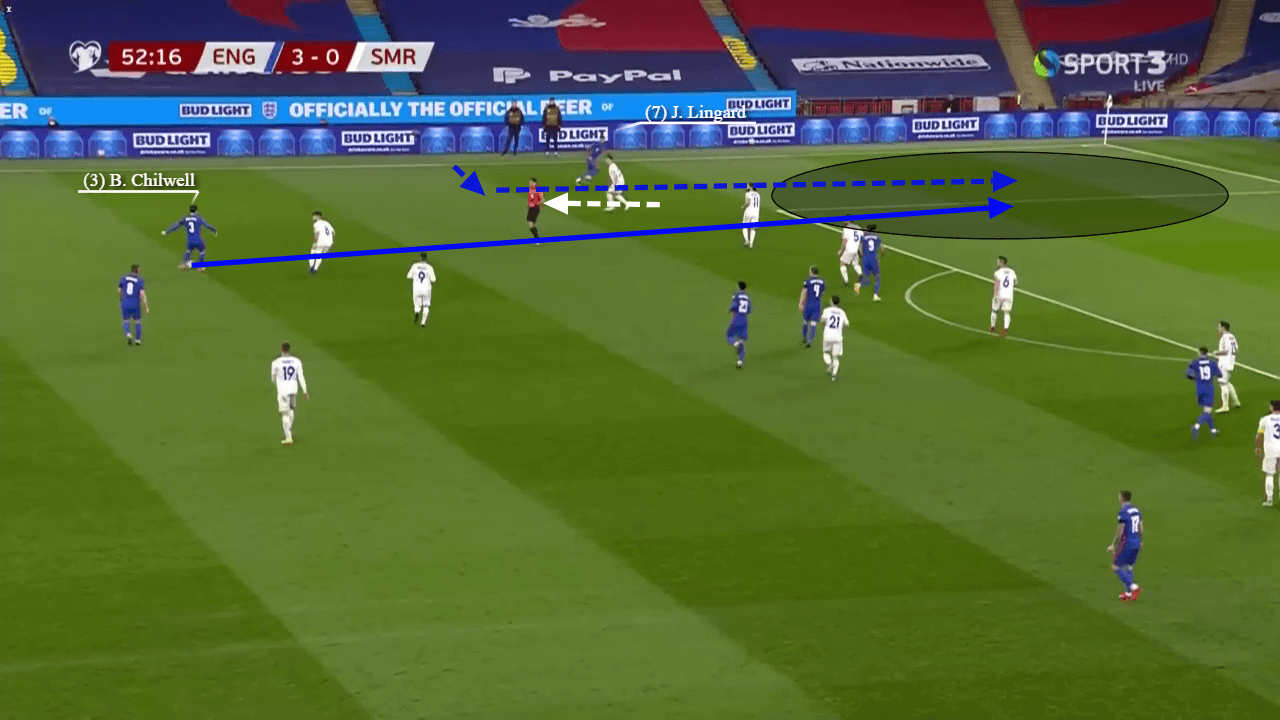
Conclusion
It is clear to see that Lingard will thrive in the Nottingham Forest set-up, as long as they are a counterattacking side. This could potentially end up being the signing of the season, a free agent keeping a team up in the Premier League.
Lingard will definitely be a hit with the fans, and his combinations with the likes of Brennan Johnson and Taiwo Awoniyi will be a huge threat to other Premier League sides. There will be times when the attacking midfielder may frustrate fans due to poor decisions in the final third, or a slight lack of quality when trying to set up his teammates, but his shooting ability will be key, especially when he arrives late in the box and slots the ball in from around the penalty spot.






Comments